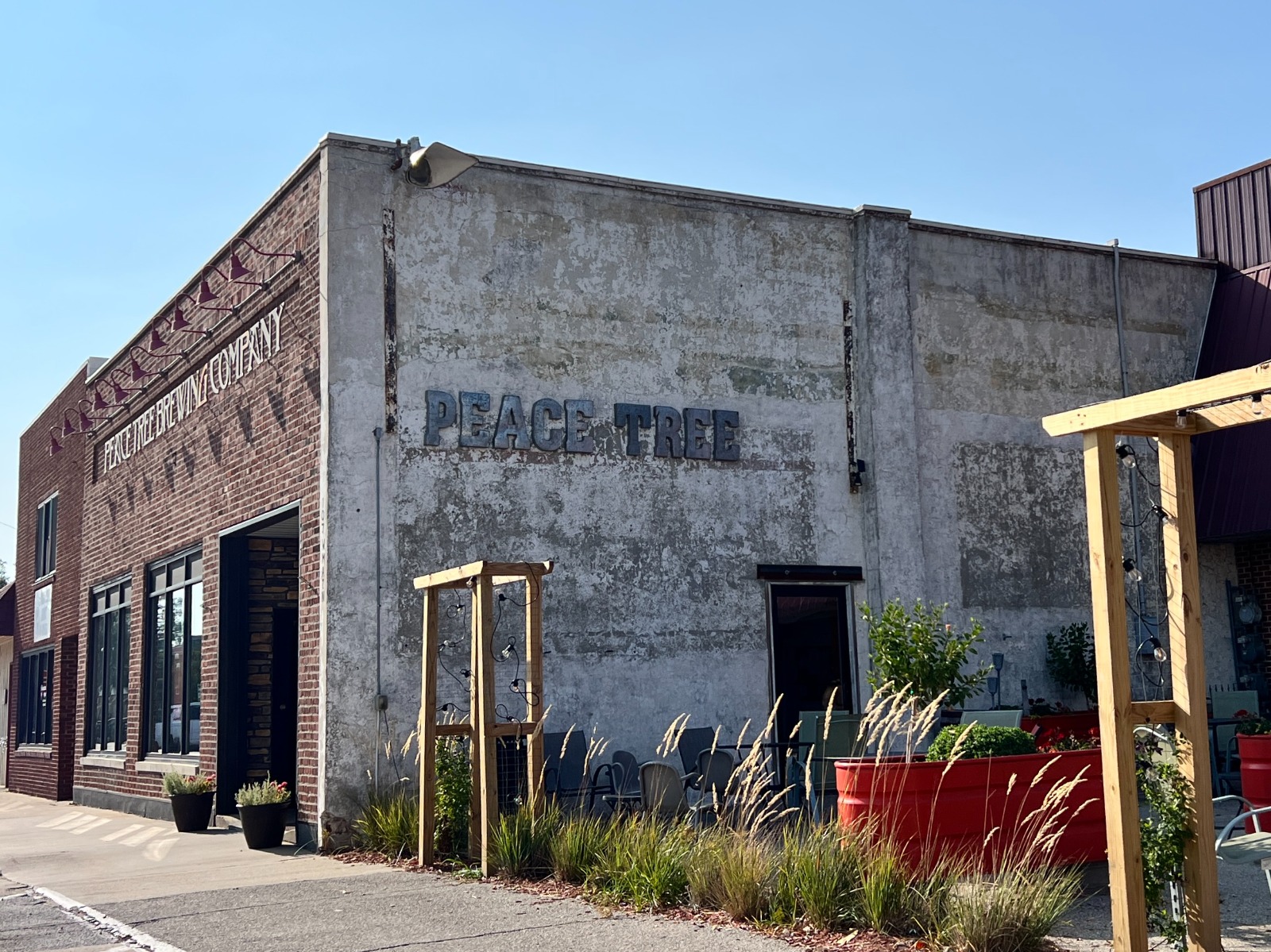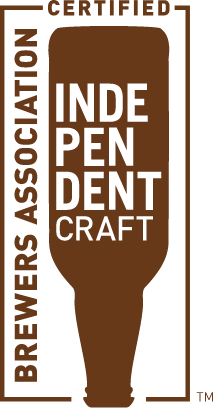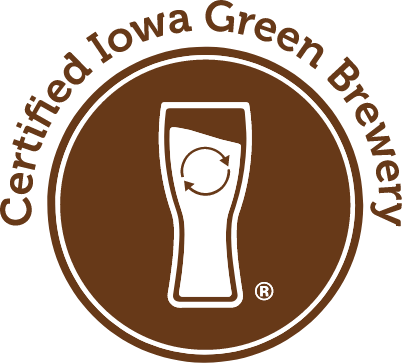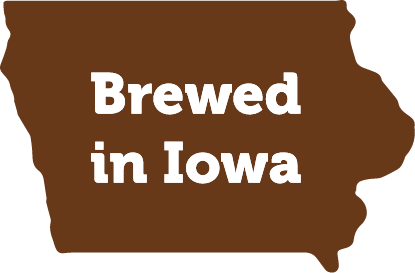Welcome to everything you need to know about the history of the Peace Tree stubby bottles!
The time has come for Peace Tree to say goodbye to our beloved stubby bottles. Our last run of bottles was Templeton Red at the end of 2022. Read on to learn the whole history of our bottles and our transition to cans.
Choosing a bottle
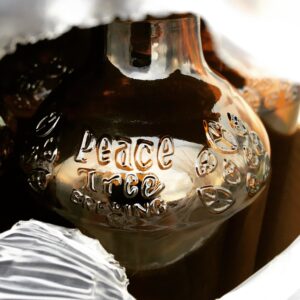 When we started the brewery we wanted to have a unique look. We considered cans in 2009, but very few breweries were using them, and consumers still associated glass with higher end beers. We made the decision that bottles were the way to go. But we wanted to be different, so our brewer found some short stubby bottles used by Full Sail out of Oregon. We were attracted to the unique look and felt like they would set us apart on the shelf from macro brews and other small breweries who, at that time, didn’t have the best reputation. However, when you are buying commodity items and you want something unique, it becomes very difficult to source. We were not able to order our Meheen bottling line until we had the bottle specifics nailed down, so we scoured all sources. The Full Sail bottle was made by OI, but it was not available to purchase as it was a specific mold. We had to eventually source through a Canadian broker, United Bottles, who was able to find the stubby style we were looking for from a plant in Trinidad and Tobago. Once we nailed the bottle supply down, we were able to move forward on a bottling line and labeler purchase, specify label sizes and continue with the design of the rest of our packaging. Unique bottles meant we also had to have a unique size label, 6-pack carrier and cardboard motherbox carton. This was all happening in the fall and winter of 2009-2010, so we could have equipment arrive when we were ready to package in spring.
When we started the brewery we wanted to have a unique look. We considered cans in 2009, but very few breweries were using them, and consumers still associated glass with higher end beers. We made the decision that bottles were the way to go. But we wanted to be different, so our brewer found some short stubby bottles used by Full Sail out of Oregon. We were attracted to the unique look and felt like they would set us apart on the shelf from macro brews and other small breweries who, at that time, didn’t have the best reputation. However, when you are buying commodity items and you want something unique, it becomes very difficult to source. We were not able to order our Meheen bottling line until we had the bottle specifics nailed down, so we scoured all sources. The Full Sail bottle was made by OI, but it was not available to purchase as it was a specific mold. We had to eventually source through a Canadian broker, United Bottles, who was able to find the stubby style we were looking for from a plant in Trinidad and Tobago. Once we nailed the bottle supply down, we were able to move forward on a bottling line and labeler purchase, specify label sizes and continue with the design of the rest of our packaging. Unique bottles meant we also had to have a unique size label, 6-pack carrier and cardboard motherbox carton. This was all happening in the fall and winter of 2009-2010, so we could have equipment arrive when we were ready to package in spring.
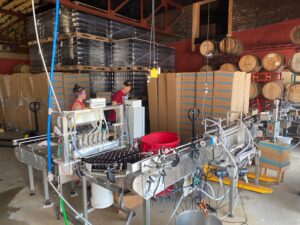 In 2009 there were not a lot of options for bottling lines that were affordable for small breweries. There were only about 1500 breweries in the US, and most bottling line manufacturers were geared up for larger breweries and larger systems. The smaller bottling line companies that many wineries used were not equipped to handle carbonated beverages. Dave Meheen, a former brewer, had engineered a small four- or six-head bottling line that fit the bill for us and many of the craft brewers of the time. The only downfall is that the machine is made to specifically fit the bottle as it feeds six bottles at once, so if bottle dimensions changed, the machine had to be adjusted for width and height. We were taking a pretty big risk on being able to have a consistent supply of bottles. That has been a challenge ever since.
In 2009 there were not a lot of options for bottling lines that were affordable for small breweries. There were only about 1500 breweries in the US, and most bottling line manufacturers were geared up for larger breweries and larger systems. The smaller bottling line companies that many wineries used were not equipped to handle carbonated beverages. Dave Meheen, a former brewer, had engineered a small four- or six-head bottling line that fit the bill for us and many of the craft brewers of the time. The only downfall is that the machine is made to specifically fit the bottle as it feeds six bottles at once, so if bottle dimensions changed, the machine had to be adjusted for width and height. We were taking a pretty big risk on being able to have a consistent supply of bottles. That has been a challenge ever since.
After getting the brew system up and going, we were ready to start bottling. As I remember, the line showed up with little instruction or guidance. No swarm of technicians to get it installed, just our brewer and us trying to figure it out. On April 22, 2010, we rolled the first bottles off the line. It was a struggle and we couldn’t quite get it right. After a break, we were fortunate some 3M engineers were in the taproom as well as a class from Grinnell College that was learning about beer. So when it started going, we all jumped in to help pull full bottles off the line and pack them into mother boxes. It was complete chaos! Not to mention, we hadn’t understood the lead time on 6-pack carriers, so we really didn’t have retail-ready packaging. That was quickly solved by putting six bottles in a brown craft paper bag with handles, sticking the label on the outside, packing them in mother boxes and attracting a lot of attention as we got them into grocery stores!
The bottling process got smoother from there. It took three people to run the line, one to put bottles on the feed conveyor, one to pick up a case at a time to set on the rinser, then place on the inlet conveyor, and a third to pack them into the pre-folded 6-pack carriers inside of mother boxes, tape them shut and stamp with the date. From the beginning we date-stamped our production date on the beers and kept a cold and warm library for quality assurance. We could run about a case of bottles through the machine every minute or so. It was labor intensive and not that fast, but we were off and running.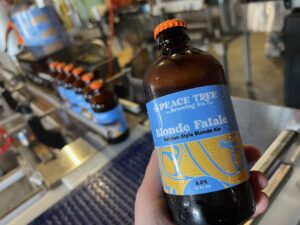
Our first snag came when we needed to reorder bottles. When you come from an insurance background, supply chain of physical goods is not something you have any experience with, not to mention glass, which is produced in large quantities with sporadic runs on specific molds and forecasting needed months in advance. That first time, we found out they weren’t running our bottles again for another three months. Our broker was able to round some up quicker, but it was a tough lesson in supply chain management.
Bottle changes and challenges
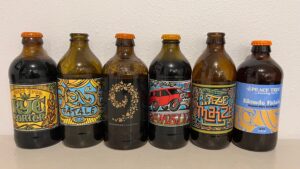
A couple of years later, we were able to move to a different supplier out of Germany with a more consistent supply, but it meant we needed to change over the bottling line, which was nearly like purchasing a new one … so we did. We ordered our second Meheen to fit the new German bottle, which was slightly taller and skinnier than the original. The old machine was then converted to do 22-oz. bombers. We had these in the market for a few years, but gradually the craft market moved away from the bombers.
In 2016, after over a year of persistence by their sales rep Jake, we were able to work with Berlin Packaging to develop a custom mold for our bottles. We were finally at the size where it made sense, and we had enough sales history to be able to forecast our bottle needs. This was an epic moment to have not only a unique bottle, but also one that was customized to Peace Tree’s brand. They were a little wider and brought back the true short, squatty look we loved. We retooled the original Meheen back to our original bottles and it worked. The downside was that they were manufactured in China, and lead times and transportation could be difficult. Berlin was a great partner in helping us manage the supply chain side of things, keeping stock in their warehouse so we could pull as needed. We used these bottles for three years before the price increases made it unsustainable. And we switched just in time to avoid the COVID shipping issues that would haunt many manufacturers in 2020.
During this time, we finally expanded the packaging area to the new building to the west of the original brewery. We had a new floor put in with drains, then moved brite tanks and the bottling line out of the brewing area. It gave us some much needed breathing room!
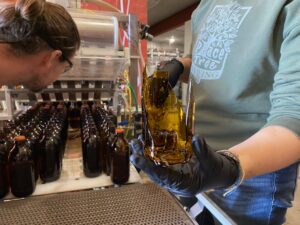 In early 2020 we sourced new bottles from a U.S. manufacturer for the first time. The trusty Meheen was retooled a little bit again, and we worked to get up and going. But the bottles kept breaking. It was very random and very difficult to pinpoint the issue, causing us a lengthy delay in bottling. Little did we know this was only the beginning of a very difficult year to come with COVID-19 on the horizon. In late February, we finally figured out that it was not our bottling line, but the bottles themselves had imperfections that were causing the height and width to be different, especially at the neck. We ended up having to toss about 30% of the bottles through a pre-inspection process.
In early 2020 we sourced new bottles from a U.S. manufacturer for the first time. The trusty Meheen was retooled a little bit again, and we worked to get up and going. But the bottles kept breaking. It was very random and very difficult to pinpoint the issue, causing us a lengthy delay in bottling. Little did we know this was only the beginning of a very difficult year to come with COVID-19 on the horizon. In late February, we finally figured out that it was not our bottling line, but the bottles themselves had imperfections that were causing the height and width to be different, especially at the neck. We ended up having to toss about 30% of the bottles through a pre-inspection process.
Just as we got bottles moving, COVID-19 shut downs started, and we had to move quickly to transition all of our production into package beer instead of draft. We were so thankful for the ability to put specialty beers we had intended for bar accounts into 6-packs with makeshift labels and sell to our customers online for curbside pick up. Later that year we were able to source closer to home with a U.S. manufacturer from the midwest and had much better luck with quality.
The transition to cans
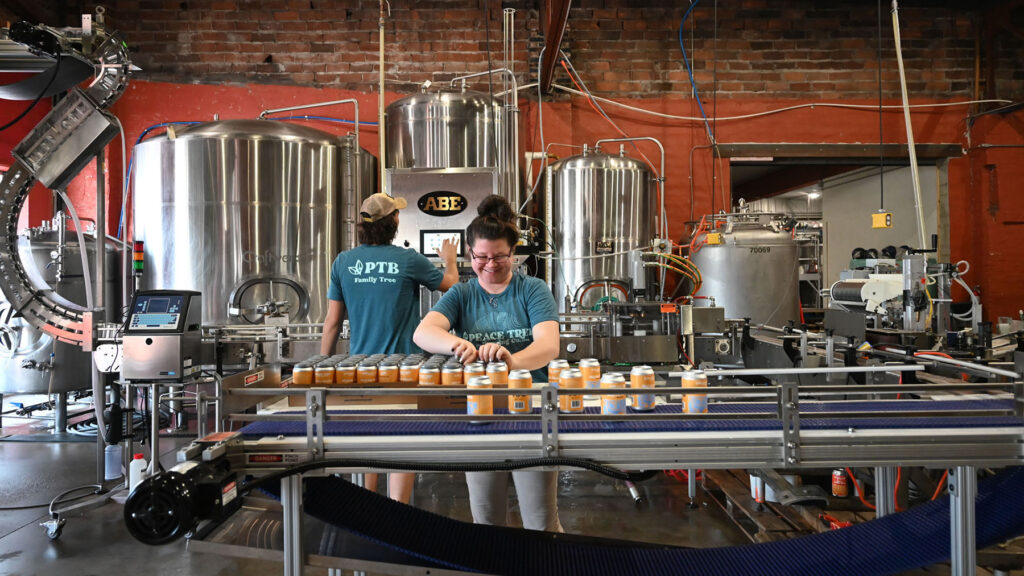 In 2019 we were able to work with Backpocket Brewing to produce beer in cans so we could test new packaging with consumers. This was a great way to see how cans performed and decide if we wanted to invest in our own equipment. At the end of 2021, we knew it was time to bring our production fully back in house and expand our packaging capabilities. But after 12 years, the Meheen was getting tired and would need to be replaced. While we love our stubby bottles, the way of craft has gone to cans. So we decided to invest in a canning line from ABE. This was delivered on December 1, 2021, and put to work the next week.
In 2019 we were able to work with Backpocket Brewing to produce beer in cans so we could test new packaging with consumers. This was a great way to see how cans performed and decide if we wanted to invest in our own equipment. At the end of 2021, we knew it was time to bring our production fully back in house and expand our packaging capabilities. But after 12 years, the Meheen was getting tired and would need to be replaced. While we love our stubby bottles, the way of craft has gone to cans. So we decided to invest in a canning line from ABE. This was delivered on December 1, 2021, and put to work the next week.
Packaging into cans provides several benefits. The cans are lighter, and we can stack more on a pallet, both as an input and as finished goods, saving on storage and shipping costs. Cans use less cardboard packaging with the tray instead of a full case box. Aluminum is easier to recycle. Cans are more portable for outdoor activities. During production, they don’t shatter and potentially injure our production staff.
Throughout 2022, we continued to produce Blonde Fatale and Root Beer in bottles as well as cans. But the time has come to streamline our production space and narrow the amount of packaging materials we have on hand. The last run of Peace Tree Root Beer bottles has been completed, the last run of Blonde will be in December 2022 and our final run of the Meheen will be a fan favorite, Templeton Red. Get those stubbies while you can, because 2023 is the year of the CAN!


